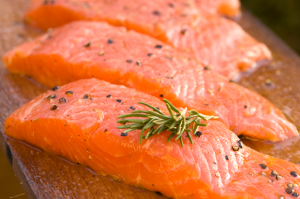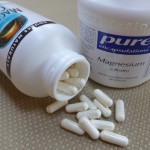By Anthoney J. Andersen – Steroidal.com
After a strenuous workout, you may feel a ‘fire’ course through your body – weaving its way in and out of every muscle fiber, causing an aching and burn-like sensation.
But don’t worry, this sensation doesn’t last forever, and in most cases, is a good thing. It simply means that you pushed your muscles to new limits and it’s your body’s way of coping with the building of new muscle.
However, the inflammation that we experience isn’t always a good thing – and in some instances – can cause serious health issues.
Fortunately, there are foods that will help cope with this acute inflammation and keep your body operating at peak performance.
FIGHT THE FIRE
Think about an open wound and when you add salt to it, it burns and severely irritates the injury. The same goes for muscle inflammation. When the muscle fibers tear, and you experience that pulsating – fire-like sensation – it’s as if someone doused your open wound with salt.
Inflammation is part of the body’s immune response – and without it – our bodies can’t heal. But when it gets out of control – like with rheumatoid arthritis – it can damage the body and cause serious health conditions including heart disease, obesity and cancer.
According to WebMD, inflammation can occur in two stages: acute and chronic. Acute inflammation can happen within seconds, minutes, hours, or even days. Chronic inflammation on the other hand, can occur over longer periods of time.
Inflammation takes place following the injury of tissues. The damage can be merely physical, or it may be the trigger to an immune response.
Three main processes occur during acute inflammation:
- Increased blood flow due to the dilation of blood vessels furnishing the region.
- Increased permeability of the capillaries, allowing food and blood proteins to travel into the interstitial spaces.
- Migration of neutrophils out of the capillaries and venules and into interstitial spaces.
Acute inflammation is your body’s response to a cut or pathogens entering the body. Its job is to protect your body from harm.
Chronic inflammation has been linked to certain other ailments such as acne, allergies, intestinal issues, neurological disorders, autoimmune disease and joint and muscle pain, says Mark Hyman, MD, chairman of the Institute for Functional Medicine and the author of the 10-Day Detox Diet.
In order to avoid all the elements that cause inflammation – saturated fats, sugar, stress, infections and environmental toxins – one would have to live life inside a bubble. However, according to Hyman, a person can decrease inflammation by following a diet rich in foods that help fight off inflammation-triggering free radicals and toxins.
Foods high in saturated fat and sugar, for example, can spur inflammation like a California wild fire.
“They cause overactivity in the immune system, which can lead to joint pain, fatigue and damage to the blood vessels,” says Scott Zashin, MD, clinical professor at the University of Texas Southwestern Medical Center in Dallas.
FOODS TO DOUSE THE FIRE
There are nutritious and savory foods on the market that will help curb the inflammation and get you back to feeling your best.
When it comes to fat, generally the rule of thumb is to decrease your fat content in order to stave off certain cardiovascular diseases like heart disease and stroke. However, there’s one type of fat that you don’t want to cut back on: omega-3 fatty acids.
Not only does your body crave these certain types of fat, but also, it needs them to help your body function properly.
Oily fish like salmon, mackerel, tuna and sardines are loaded with omega-3s and are known to reduce inflammation.
In order to reap the benefits of omega-3s, it is recommended that you eat fish several times a week and it should be cooked in healthy ways. In a 2009 study from the University of Hawaii, men who consumed baked or broiled fish (as opposed to fried, dried, or salted) reduced their risk of heart disease by 23 percent compared to those who ate the least.
If you’re not a huge seafood fan, there’s no need to worry. There are fish-oil supplements that can act as a substitute and deliver the same nutritional values obtained from eating fish.
SOY
Beans in general are great sources of anti-inflammatory components known as phytonutrients.
“In recent years, soy has been singled out by researchers for its ability to reduce the inflammation marker C-reactive protein,” says Wendy Bazilian, RD, author of The SuperfoodsRx Diet.
LEAFY GREENS
According to Mayo Clinic, it’s suggested that vitamin E may play a vital role in protecting the body from pro-inflammatory molecules called cytokines. One of the best sources of this vitamin comes from dark leafy greens, which include spinach, kale, broccoli and collard greens.
Leafy greens may also contain other beneficial vitamins and minerals like calcium and iron.
CONCLUSION
If you’re an active strength trainer or exercise enthusiast, then reducing inflammation is key to building strong muscles and keeping your joints as fluid as possible.
Cutting down on foods containing saturated fats and sugars will not only greatly decrease your chances of inflammation, but it will also reduce your chances of heart disease and stroke and keep your body operating like a well-oiled machine for many years to come.
Stay healthy. Remain active.








